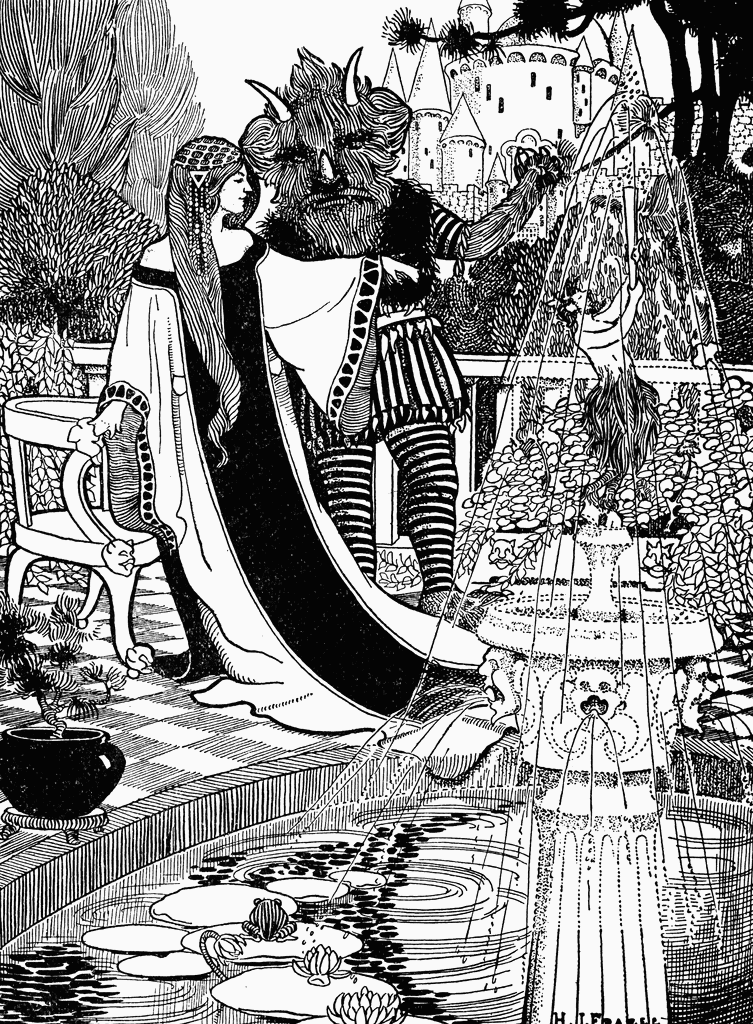
Charles H. Sylvester
Yet there appears to be quite significant differences between the two translations. For example, Dowson has the Beast asking Beauty not to marry him each night, but to sleep with him, while Zipes sticks with nightly marriage proposals. Again, I'm not a French expert, but the French verb "to marry" ("marier") and "to sleep" ("dormir" or "coucher") are not interchangeable, at least not according to my French-English dictionaries, or anything I learned from my very bad high school French teacher.
The difference between marriage and sleeping is quite significant, although we can assume Villeneuve only meant the most innocent form of sleeping. The night of Beauty's acceptance of the Beast's offer, from Dowson's translation:
"However slight was Beauty's impatience to find herself by the side of her most singular mate, she nevertheless got into bed. The lights went out immediately. Beauty could not help fearing that the enormous weight of the Beast's body would crush the bed. She was agreeably astonished to find that the monster placed himself at her side with as much ease and agility as she had herself sprung into bed. Her surprise was even greater still on hearing him begin to snore forthwith; presently his silence convinced her that he was in a profound sleep."
This is doubtless very surprising for something published in 1740-that a couple would immediately sleep in the same bed after becoming engaged, but not touch one another. There is definitely a sense of humor in the wondering if the Beast will crush the bed, and then his snoring, but it almost seems too much like a joke and not a fairy tale.

Scott Gustavson
A striking contrast to Jack Zipes' translation. After the fireworks display ends: "the Beast took his leave, and Beauty retired to rest. No sooner was she asleep than her dear Unknown [the Beast in Prince form, who visits her each night in her dreams] paid her his customary visit."
This is not just difference in how to translate a certain word or phrase. Either Dowson invented several lines about the Beast sleeping on the same bed as Beauty, or Zipes invented the part about the Beast taking his leave and just left the rest out. What gives? I AM SO CONFUSED. What does the actual French say? How would one access this French version? The Dowson itself is too rare to get my hands on, and I'm hardly fluent enough to translate for myself anyway. Why do so many people lie about fairy tales?


I hope you are able to find out, and when you do, I want to hear all about it.
ReplyDeleteVereidigte Übersetzer Panjang berjela hang cerita nak cerita perkataan BALAPAN saja...Aku ingat BALAPAN tu diambil sempena nama atlet veteran mana ka Bala Karuppan ka...Oooooo (mulut aku ternganga macam hang tulis)
ReplyDeleteThe Dowson is avail in print here: http://amzn.to/2oMOFXw and is online here: https://archive.org/stream/storyofbeautybea00dowsuoft/storyofbeautybea00dowsuoft_djvu.txt
ReplyDeleteThank you!!
Delete